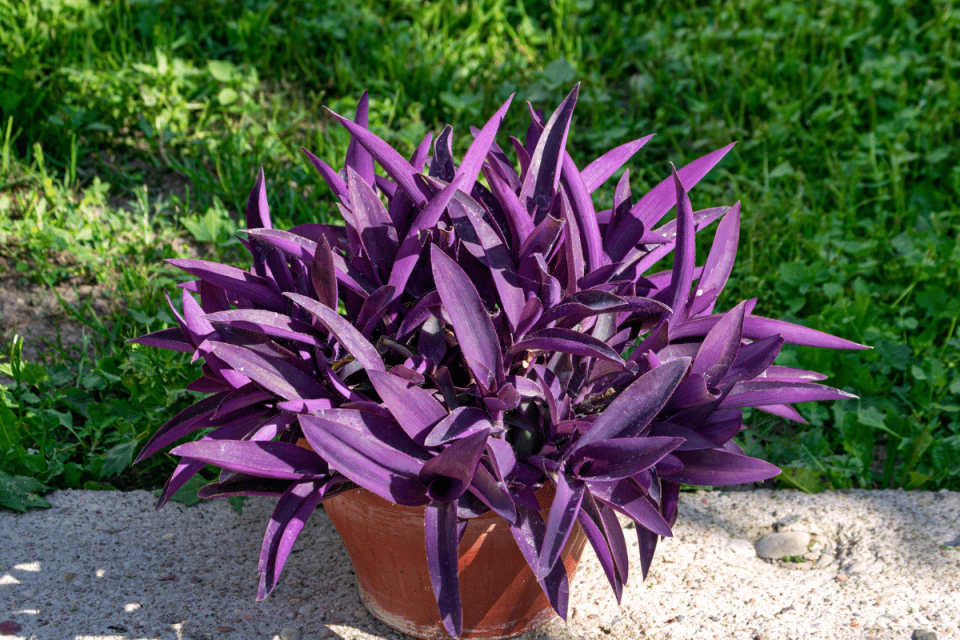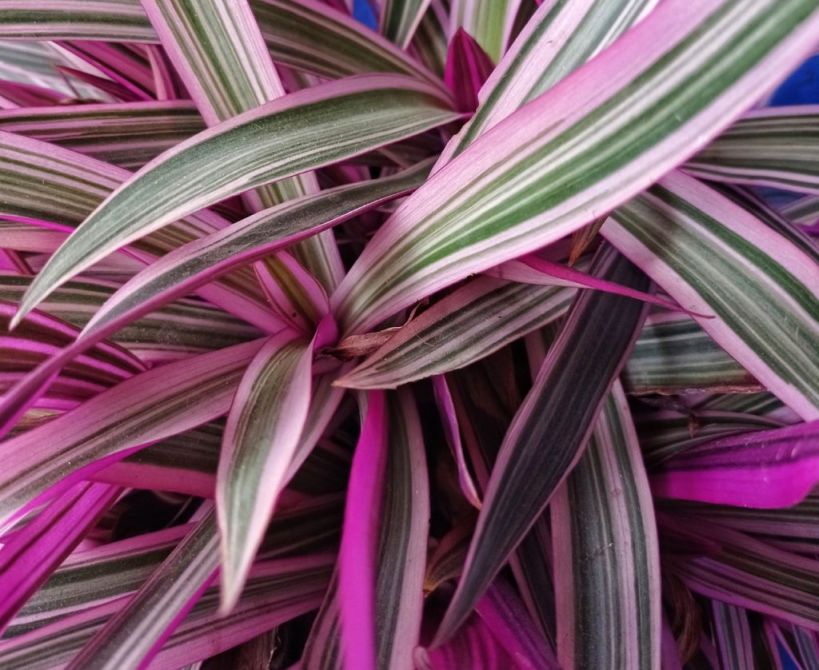Add A Pop Of Color To Your Home With Gorgeous Purple House Plants!

House Plants Purple: Bringing a Pop of Color to Your Indoor Space
Introduction
House plants have become an essential part of interior design, adding a touch of nature and vibrancy to our indoor spaces. Among the various types of house plants available, those with purple foliage have gained significant popularity in recent years. In this article, we will explore what exactly is meant by house plants purple, how you can incorporate them into your home, their known benefits, and provide solutions and information to help you maintain these beautiful plants.
What do we mean by House Plants Purple?

House plants purple refers to indoor plants that have purple-colored foliage. These plants have leaves that range in shades of purple, from deep and rich hues to lighter pastel tones. The purple color in these plants is a result of specific pigments present in their leaves, such as anthocyanins, which give them their distinctive and attractive appearance.
How to Incorporate House Plants Purple into Your Home

Adding house plants purple to your indoor space can instantly transform the ambiance and aesthetics of any room. Here are some creative ways to incorporate them:
1. Statement Pieces
Choose large house plants with purple foliage, such as the popular Purple Passion Plant (Gynura aurantiaca), to create a stunning focal point in a living room or dining area. Their vibrant purple leaves will draw attention and add a unique touch to your decor.
2. Hanging Baskets
Hang trailing house plants with purple foliage, such as the Tradescantia zebrina or Purple Heart Plant, in decorative baskets from the ceiling or hooks on the wall. The cascading purple leaves will create an eye-catching display and bring a sense of depth to your space.
3. Colorful Combinations
Pair house plants with purple foliage with complementary-colored pots or other plants to create visually appealing combinations. For example, placing a purple-leafed plant next to one with yellow or green leaves can create a striking contrast that enhances the overall aesthetics of your room.
What is Known about House Plants Purple?
House plants with purple foliage are not only visually appealing but also come with a range of benefits. Here’s what is known about these captivating indoor plants:
1. Stress Reduction
Research suggests that being around plants, including those with purple foliage, can help reduce stress and anxiety. The calming effect of the color purple combined with the presence of nature can contribute to a more relaxed and tranquil environment.
2. Air Purification
Like many other house plants, those with purple foliage can help improve indoor air quality by removing harmful toxins and releasing oxygen. They act as natural air purifiers, ensuring a healthier living space for you and your family.
3. Enhancing Productivity
Having house plants, including those with purple leaves, in your workspace or study area has been linked to increased productivity and concentration. Their presence can improve focus and create a more vibrant and inspiring setting.
Solution: Caring for House Plants Purple
Maintaining the health and vibrancy of your house plants purple requires proper care and attention. Here are some essential tips to ensure your plants thrive:
1. Lighting
Most house plants purple thrive in bright, indirect light. Place them near a window where they can receive ample sunlight without being exposed to direct rays, as this can cause leaf burn. Adjust the lighting based on the specific needs of your plant species.
2. Watering
Water your house plants purple thoroughly but avoid overwatering, as it can lead to root rot. Check the moisture level of the soil regularly and keep it slightly moist. Adjust the watering frequency depending on the season and specific plant requirements.
3. Temperature and Humidity
House plants purple generally prefer temperatures between 65-75°F (18-24°C) during the day and slightly cooler temperatures at night. They also appreciate moderate humidity levels, so consider using a humidifier or placing a tray filled with water near your plants to increase humidity.
4. Fertilization
Feed your house plants purple with a balanced indoor plant fertilizer during the growing season, typically spring and summer. Follow the instructions on the fertilizer packaging and avoid over-fertilizing, as it can damage the plants.
5. Pruning and Maintenance
Regularly inspect your plants for any signs of pests or diseases and take appropriate measures to prevent their spread. Trim off any dead or yellowing leaves to maintain the overall health and appearance of your house plants purple.
Information about Different House Plants Purple
There are several varieties of house plants with purple foliage that you can choose from. Here are a few popular options:
1. Purple Waffle Plant (Hemigraphis alternata)
The Purple Waffle Plant features deeply textured leaves with a unique purple color and a wavy pattern, resembling a waffle. It is a low-maintenance plant that thrives in medium to bright indirect light, making it an ideal choice for beginners.
2. Purple Velvet Plant (Gynura sarmentosa)
The Purple Velvet Plant is known for its soft and velvety purple leaves, which add a touch of elegance to any space. It prefers bright indirect light and moderate watering, making it suitable for various indoor environments.
3. Persian Shield (Strobilanthes dyerianus)
The Persian Shield showcases vibrant purple leaves with metallic silver accents. It thrives in bright indirect light and moderate humidity, making it a perfect choice for bathrooms or kitchens with ample natural light.
4. Purple Oxalis (Oxalis triangularis)
The Purple Oxalis features triangular-shaped leaves that have a rich purple hue on the upper side and a deep burgundy shade underneath. It prefers bright indirect light and well-draining soil to thrive.
Conclusion
House plants purple bring a unique and captivating element to your indoor space, enhancing its aesthetics while providing numerous benefits. From stress reduction to air purification, these plants offer a natural and visually appealing way to create a more vibrant and relaxing environment in your home or workspace. By following the care tips mentioned above, you can ensure the longevity and vitality of your house plants purple, allowing you to enjoy their beauty for years to come.
Frequently Asked Questions (FAQs)
1. Are house plants with purple foliage difficult to care for?
No, most house plants purple are relatively low-maintenance and easy to care for, especially when provided with the right conditions of light, water, and humidity.
2. Can house plants purple survive in low-light conditions?
While some house plants purple can tolerate lower light conditions, they generally thrive in bright, indirect light. It is best to place them near a window where they can receive ample sunlight.
3. Are there any health benefits associated with having house plants with purple foliage?
Yes, house plants purple, like many other indoor plants, can help reduce stress, improve air quality, and enhance productivity and concentration.
4. How often should I fertilize my house plants purple?
House plants purple typically require fertilization during the active growing season, which is spring and summer. Follow the instructions on the fertilizer packaging for the recommended frequency.
5. Can I propagate house plants with purple foliage?
Yes, many house plants purple can be propagated through various methods such as stem cuttings or division. Research the specific propagation techniques for your chosen plant to ensure successful propagation.

I am a beginner writer who continues to learn and consistently creates informative articles to express the ideas that I master.